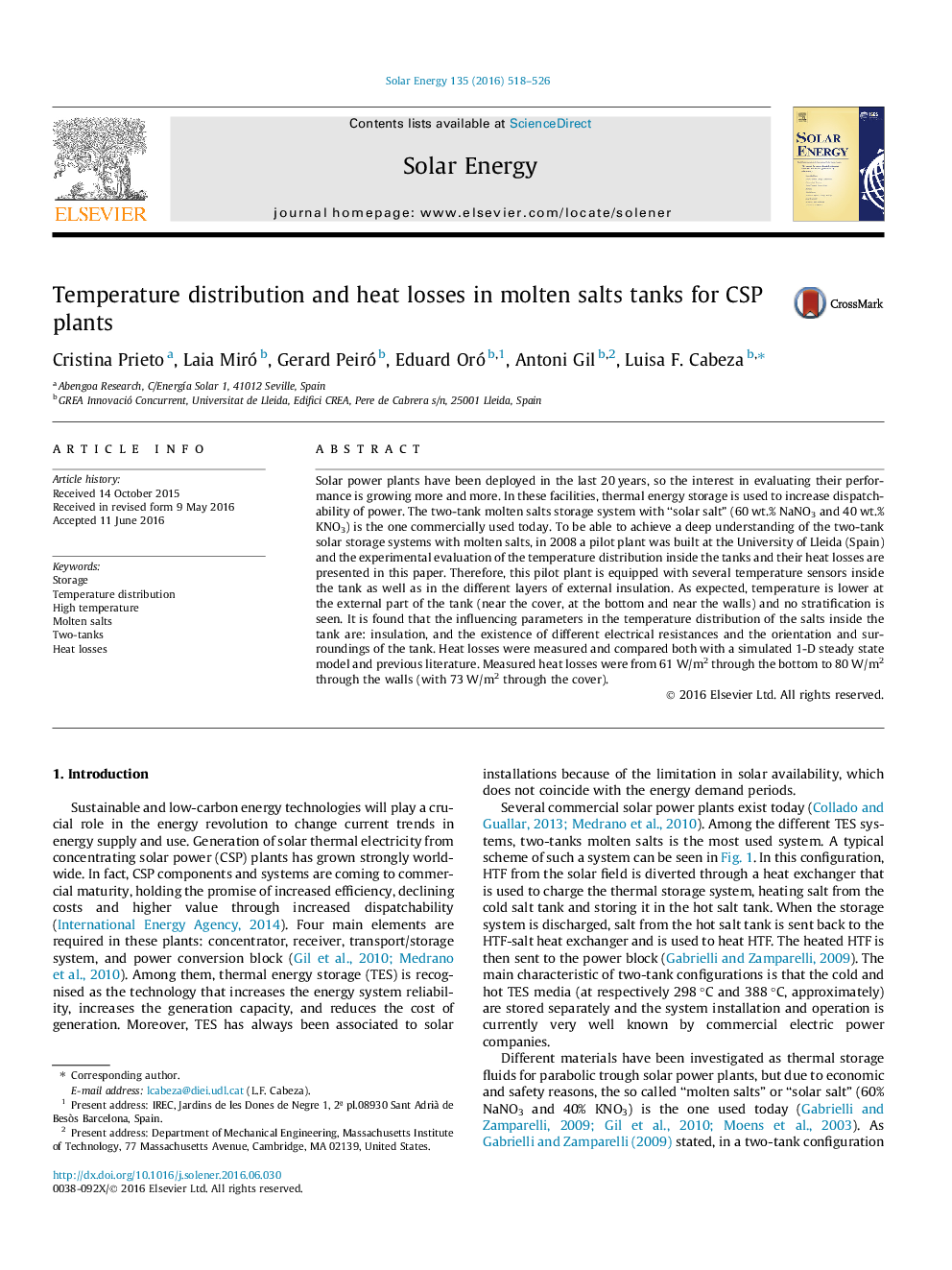| Article ID | Journal | Published Year | Pages | File Type |
|---|---|---|---|---|
| 7936802 | Solar Energy | 2016 | 9 Pages |
Abstract
Solar power plants have been deployed in the last 20Â years, so the interest in evaluating their performance is growing more and more. In these facilities, thermal energy storage is used to increase dispatchability of power. The two-tank molten salts storage system with “solar salt” (60Â wt.% NaNO3 and 40Â wt.% KNO3) is the one commercially used today. To be able to achieve a deep understanding of the two-tank solar storage systems with molten salts, in 2008 a pilot plant was built at the University of Lleida (Spain) and the experimental evaluation of the temperature distribution inside the tanks and their heat losses are presented in this paper. Therefore, this pilot plant is equipped with several temperature sensors inside the tank as well as in the different layers of external insulation. As expected, temperature is lower at the external part of the tank (near the cover, at the bottom and near the walls) and no stratification is seen. It is found that the influencing parameters in the temperature distribution of the salts inside the tank are: insulation, and the existence of different electrical resistances and the orientation and surroundings of the tank. Heat losses were measured and compared both with a simulated 1-D steady state model and previous literature. Measured heat losses were from 61Â W/m2 through the bottom to 80Â W/m2 through the walls (with 73Â W/m2 through the cover).
Related Topics
Physical Sciences and Engineering
Energy
Renewable Energy, Sustainability and the Environment
Authors
Cristina Prieto, Laia Miró, Gerard Peiró, Eduard Oró, Antoni Gil, Luisa F. Cabeza,
